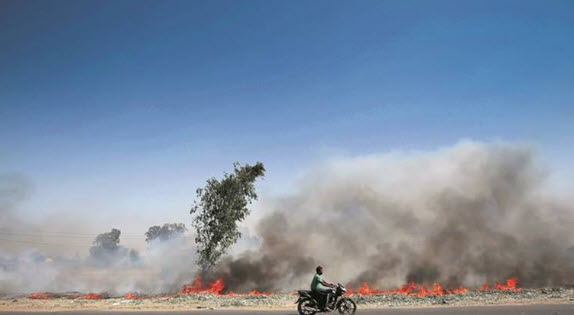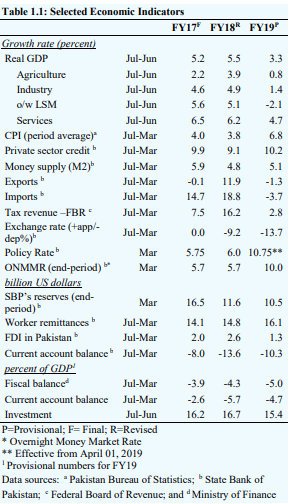This blog post is based on two policy talks held at CDPR entitled, “Bringing Pakistan’s Tech Sector to the Forefront” and “Realizing Pakistan’s IT Export Potential“.
Pakistan’s tech industry is shaping up. The country produces +20,000 IT graduates each year, it offers a domestic market of over 200 million, and has churned over 700 tech start-ups since 2010 of which close to 70% are functional even today. The industry has the ability to provide a fundamental boost to the country’s economy, especially in this time of fiscal restraint.
Several college graduates and young entrepreneurs are dreaming of the next billion-dollar idea. This conception is not far-fetched. A group of young Estonians developed Skype in 2003 which was eventually sold to Microsoft for $8.5 billion in an all cash deal! In fact, all tech giants across the world today have had humble beginnings. WhatApp was sold to FaceBook for 19 billion dollars, almost three times Pakistan’s defence budget. Such is the scope and potential of this sector.
On the flip side, statistics say nine out of ten startups are bound to fail. Those that succeed do so because of the right product fit. They have ideas that tap into a real market need and create innovative products that simplify lives. How do they make the right product? If their product is removed from the market, it will be sorely missed. This is when they have hit the jackpot.
Pakistan’s success story so far
With latest technology and access to faster internet, the tech industry is producing services and products, across sectors, that are increasingly more dynamic and revolutionary. The industry’s access to seed, private equity and venture capital funds is also improving.
Patari, an online streaming application and a household name for music lovers, made headlines when it secured $200k in seed money in 2017. In 2015, Eatoye, an online food delivery service, was acquired by one of the world’s largest food portals, FoodPanda and continues to expand across Pakistan. More recently, Airlift nabbed $12 million in Pakistan’s largest Series A funding – a company’s first significant round of venture capital financing – ever for a startup in all of South Asia. It is a ride-hailing startup which connects passengers with buses on a fixed-rate, operating in Pakistan’s largest cities.
These prominent app-based startups and many more cater to the domestic market, are part of the local economy and form an important element of the tech eco-system. There is another major component of this sector which caters to the international market (through software development and business process outsourcing) and is deeply embedded into the global value chain. However, most Pakistani firms provide low value products and services. Despite this, IT exports reached the billion-dollar mark in 2017-18, with software exports comprising $700 million. In fact, IT experts place the total exports at $2.5 billion (incorporating an estimated $1.2 billion earned by freelancers). This is however still much lower than India’s exports at approximately $125 billion for the same year.
Rising exports and domestic success stories show the immense potential of this sector. But two fundamental constraints are limiting this potential – restricted supply of skilled labor and lack of a supportive ecosystem.
Skilled workforce
The tech industry is highly skill and knowledge intensive. It may be able to withstand disruptive energy supply, but it will not flourish without an adequate supply of skilled labor.
Official statistics confirm that at least 10,000 IT graduates enter Pakistan’s workforce each year. At the same time Pakistan also ranks much better in cost than most lower-middle-income countries group. The average annual cost of a software engineer in Pakistan is one fifth of the cost in USA and Europe[1]. However, of the total graduates, just under a thousand graduates are products of Tier 1 universities and of these around half meet the skills requirement for specialized input needed by the industry.
The tech industry relies on skills broadly of two kinds – technical/ specialized skills to develop and design IT products and skills to develop innovative business models and marketing strategies. One without the other will continue to constrain Pakistan’s access to a market for high value products.
The academic path to becoming a tech professional is not well defined. Product development relies on a workforce with more refined skill set, based on knowledge about product design, technology and marketing. Pakistan is not able to develop a niche in gaming (which is 80% of the revenue of Google and Apple Store) because its workforce lacks knowledge about game development and design.
At the same time, it needs creative minds that are able to come up with innovative solutions to problems put forward by international clients. Basic software development only requires writing codes towards an end-goal already defined by the client and therefore does not enable/require the workforce to become creative.
Since the required skills do not exist amongst Pakistani graduates’ firms, those wishing to capture the high-end market – have to also invest in skills development. In addition to a product risk (i.e. whether they have the right product fit in the market) the companies also end up facing an execution risk (due to inadequate skills).
The country also lacks creativity in developing innovative business models, regardless of how technically sound a product is. Developing scalable business models is a first crucial step towards attracting large sums of money or venture capital funds.
Developing good business models and creative products is only possible if the firms are supported by a strong educational/ training system. At the moment very few universities focus on subjects like entrepreneurship, computer design or branding which can help entrepreneurs when they start on their own and enable them to add value to their products. Pakistan also lacks a strong cohort of tier 2 universities.
Overall, the multifaceted nature of producing IT products/services requires a multi-disciplinary education. Currently, Pakistan’s education system does not nurture this kind of thought process or encourage innovation.
Having the right ecosystem
The country hasn’t yet created an ecosystem where an entrepreneur is born, raised, and educated in Pakistan and will go onto register his or her company in Pakistan and make it big. Young Pakistani entrepreneurs struggle to develop their ideas. At the same time, they are unaware of how to operate in the local market and how to attract foreign investors.
Pakistan has a thriving freelance industry. Globally it is ranked 4th in terms of number of freelancers engaged in software development and technology[2].

Does this really demonstrate success for this sector, or does it indicate the industry’s failure to absorb the large number of graduates and provide them with gainful employment? And unless this talent becomes part of the formal economy, its growth will always remain constrained.
Access to funding is a significant bottleneck. There is only $0.06 per capita of venture capital money in Pakistan per year, while Bangladesh has $0.07, Nigeria $0.18 and India $3.72. In 2017, only nine Pakistani startups received venture capital funding compared to 34 in Nigeria, 38 in the UAE and approximately 790 in India. Overall, Pakistan’s tech startups raised under $30 million in 2018 compared to countries such as Indonesia (excluding unicorns[1]) raised over $274 million in 2018.
The issue is two-fold: regulations make it cumbersome to set up a fund inside Pakistan; regulations make it hard to get money out of the country.
Global venture capital investors find the process of investing, having shares issued and registered riddled with red tape. Approvals are required from various government departments such as the Securities and Exchange Commission of Pakistan, Competition Commission of Pakistan and State Bank. This would put off anyone who has the option to invest elsewhere in the world. Due to over-regulation investment funds choose to operate from outside of Pakistan.
Foreign payments are heavily regulated and offered at unfavorable exchange rates. Pakistani startups prefer to route foreign funding using alternative means (such as register the company abroad) or keep the funds overseas.
Lack of recognized international payment gateways especially impacts smaller businesses as larger players rely on banking channels for their transactions. Absence of recognized payment gateways such as PayPal also make it difficult for new clients to trust young entrepreneurs, whether individuals or companies.
What more can be done?
Pakistan may have been slow to catch on but there is now wide recognition of the significance of this sector for the country’s economy. The government is carrying out initiatives and rolling out policies that are highly supportive of the ICT space in Pakistan. It has proposed a regulatory structure, though yet to be implemented, that intends to boost both the outward-looking and domestic ICT industry by providing an enabling environment.
The new government has established a 17-member task force on IT and telecommunications comprising members of the tech sector to advise policy changes and develop strategic plans to strengthen the technology ecosystem of Pakistan. In terms of execution progress remains slow.
Pakistan also approved its first ever Digital Pakistan Policy in 2018 to transform IT and other sectors of the economy. Under the landmark policy, the country aims to double its overall IT exports by 2020. However, this policy is not accompanied by a time-bound plan.
Pakistan has now launched a Digital Pakistan initiative, aimed at giving a comprehensive cover to government’s multidimensional objectives, such as job creation, ending corruption and supporting and promoting the economy. Underpinning this campaign are the five core pillars of the strategy: access & connectivity, digital infrastructure, e-government, digital skills, training & innovation and entrepreneurship.
Start-up incubators and accelerators are also springing across Pakistan run by both the public and private sector to support development of spinoffs and improve access to financial and technical resources. At least 20 incubators have been established in collaboration with Plan9 – a PITB run technology incubator. So far, it has created 1400 jobs and made an investment worth $5.8 million, with over 180 startups now graduated.
Initiatives have also been taken to ease tax regulations to encourage investment in this sector and make entry simpler for startups. The government also approved licenses for Pakistan’s first Private Equity and Venture Capitals funds. There has also been an agreement with South Korea to create a technology park in Islamabad.
However, to fully realize the potential of this sector, Pakistan needs to remove the core obstacles that limit growth. Despite all the positive reform efforts, an overarching IT policy is still missing. Convergence to a central policy document, will help avoid overlap between the various policy actors and help assign clear responsibility to each player.
Secondly, government should open up procurement for the private sector to encourage the tech industry to build their portfolio, get exposure to large scale projects and pitch for similar projects in the foreign market, apart from creating more jobs. Some big successes can be seeded on their back, making international venture capital sit up and take notice.
Improving the labor supply is a long-term goal. However, some quick fixes can be implemented to partially relieve this market constraint. Pakistan can create innovation clusters where industries and universities can come together to form specialized research hubs. Pakistan also needs to improve its learning by doing culture as most graduates take up to a year or more to fit into the industry. Finally, the higher education commission needs to take some serious decisions about the role it can play in promoting a culture of innovation, creativity and entrepreneurship.
Pointing out that Pakistan needs to advance on all these dimensions is neither news nor helpful development advice unless it is accompanied by a time-bound action-oriented plan that delineates responsibilities. The Digital Policy recently announced must be supplemented with a plan of action, with short to medium to long term plans on how the core set of objectives can be achieved with assignment of responsibilities across various stakeholders.
Zara Salman is the Senior Research Associate at the Consortium for Development Policy Research (CDPR) and Hina Shaikh is a Country Economist at the International Growth Centre (IGC) in Pakistan.
[1] A unicorn is a term used in the venture capital industry to describe a privately held startup company with a value of over $1 billion.
[2] To put it briefly, incubators provide a fully equipped space for entrepreneurs to nourish and execute their start-up and provide mentoring and networking sessions. Whereas in an accelerator, the start-up is given a specific amount of time and a small investment to make it work.
[3] A technology incubator (named after the first free-share operating software by Bell Labs) was launched in 2012.






 The macroeconomic ramifications of past governments and their policies and actions over the decades is well reflected in the economic indicators of 2019 as well.
The macroeconomic ramifications of past governments and their policies and actions over the decades is well reflected in the economic indicators of 2019 as well.






